
Brainsmart kids & teens
Sociologist (MA) and science communicator Anette Prehn plays a key role in adults’ new and deeper understanding of children.
By conveying complex neuroscience in a down-to-earth manner, she offers explanations, metaphors and tools that help teachers, nursery nurses and parents alike to strengthen their understanding of and constructive interaction with kids and teens.
They get to see how kids and teens do the best they can with the brain functions and skills they have developed so far. They also identify new pathways in the relational dynamics, they are embraced in.
Anette Prehn has authored the books ‘BrainSmart Kids’, ‘BrainSmart Pedagogy’, ‘Derived effects’ and ‘FLIP’ – all relevant for adults interacting with kids and teens. Anette Prehn has furthermore written 10 mini books and two picture books that boost the resilience of kids and teens and strengthen their ability to make good and value-based choices in life.
Kids and teenagers, says Anette Prehn deserve adult surroundings that understand and respect the rules of the brain. Kids’ brains are extraordinarily changeable; they change according to how they are being put to use. The feedback kids get from the adults around them is crucial to how they perceive themselves and which emotional habits and competences they build.
Anette Prehn has been called “a wise woman with the eyes of a child”, and her depth of analysis and perspective wrapped in in bubbly demeanour is indeed what often strikes people. She is a keynote speaker, trainer and facilitator when she doesn’t write books. And a female entrepreneur since 2005.
Brainsmart kids & teens
Sociologist (MA) and science communicator Anette Prehn plays a key role in adults’ new and deeper understanding of children.
By conveying complex neuroscience in a down-to-earth manner, she offers explanations, metaphors and tools that help teachers, nursery nurses and parents alike to strengthen their understanding of and constructive interaction with kids and teens.
They get to see how kids and teens do the best they can with the brain functions and skills they have developed so far. They also identify new pathways in the relational dynamics, they are embraced in.
Anette Prehn has authored the books ‘BrainSmart Kids’, ‘BrainSmart Pedagogy’, ‘Derived effects’ and ‘FLIP’ – all relevant for adults interacting with kids and teens. Anette Prehn has furthermore written 10 mini books and two picture books that boost the resilience of kids and teens and strengthen their ability to make good and value-based choices in life.

Kids and teenagers, says Anette Prehn deserve adult surroundings that understand and respect the rules of the brain. Kids’ brains are extraordinarily changeable; they change according to how they are being put to use. The feedback kids get from the adults around them is crucial to how they perceive themselves and which emotional habits and competences they build.
Anette Prehn has been called “a wise woman with the eyes of a child”, and her depth of analysis and perspective wrapped in in bubbly demeanour is indeed what often strikes people. She is a keynote speaker, trainer and facilitator when she doesn’t write books. And a female entrepreneur since 2005.
BRAINSMART KIDS
– THE UPCOMING BOOK
Even though we all strive to do what is best, many adults end up acting and communicating in ways that work against the rules of the brain. In her best-selling book BrainSmart Kids, Anette Prehn shows, with humour and warmth, how adults tend to behave in BrainClumsy ways towards children, because we don’t understand how the brain works.
The book is full of examples relating to the 0–18-year-olds to inspire the reader to bring out the best in children – and oneself. It is a bestseller in Denmark and receives massive praise from readers.
Why this book is needed
In a growing number of countries, punishing children physically is becoming illegal and telling them off verbally is now understood to be detrimental and doing little good for their learning, life skills and healthy development. In the light of this, we need to build a new repertoire of parenting and teaching skills that will help children cope with life’s demands in the 21st century and give them the ability to learn, laugh, grow, and thrive.
These years more and more children receive medical diagnoses, such as ADHD. This often leads them to feel flawed or inadequate. Anette Prehn says adults ought to ensure that the environments surrounding children are close to BrainSmart before trying to diagnose them. In many situations children’s current behaviours and emotional repertoires are directly linked to the BrainClumsy communication and behaviours of their adults.
So far, “BrainSmart Kids” has been published in Danish, German, Swedish and Norwegian. Anette Prehn is open to connect with international publishers interested in publishing it. A full, professional translation into English exists, but hasn’t been published.
Feel free to reach out: anette@anetteprehn.com
‘Anette Prehn is a genius at communicating applied neuroscience to anyone from CEOs to five-year-old kindergarteners.’
Organisational Psychologist Olu Robbin-Coker
‘I’d been taking anxiety medication for seven years when I stumbled upon BrainSmart Kids. When I was halfway through, I asked my doctor to take me off my medication. I’d come to understand what happens in the brain and how to regulate it. Today, I have been medication-free for a year and a half.’
PA Michelle Uhre
‘It’s an amazing skill to be able to get complex theory across in digestible bites without dumbing down for an uninitiated readership, while piquing the interest of those-in-the-know and then showing how to put it all into practice! Anette Prehn writes divinely!‘
Chiropractor Berit Brun Boegh
‘High-quality research dissemination connects modern neuroscience with classical social psychology. Comprehensible and useful for a broader audience.’
Review at Folkeskolen (Danish journal for teachers working with kids between 6 and 16 years of age)
‘All my staff – teachers and pedagogues – have read Anettes Prehn’s book ‘BrainSmart Kids’. It has provided us with a common language, which we speak and act upon. Anette Prehn’s ambition is to bring ‘Research to the people’, and she communicates so understandably that my staff can further explain it to the children’s parents. Hence, our common language among the staff has become a common language for everyone involved with the children, and it has been a tremendous gift for all.
When we were reading ‘BrainSmart Kids’, we discussed the towards-language at a staff meeting. The next morning, we had a completely different school and kindergarten. It was magical. You could see the change immediately. The atmosphere in the house simply shifted.
Before, my staff would say, ‘I have told you 100 times, you must not run in here!!’ And suddenly, they said instead, ‘Hey! You are very welcome to run in the hallway!’ And so, the children did. They embraced what was offered to them. The tone and atmosphere changed from one day to the next. It has become a more friendly and pleasant place.’
Christian Kofoed, Head of Fussingø-Egnens Free school, Kindergarten and Daycare
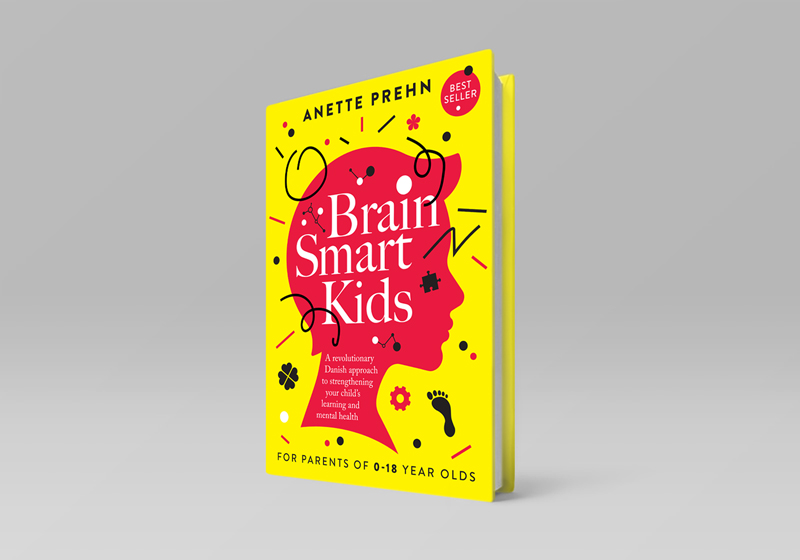
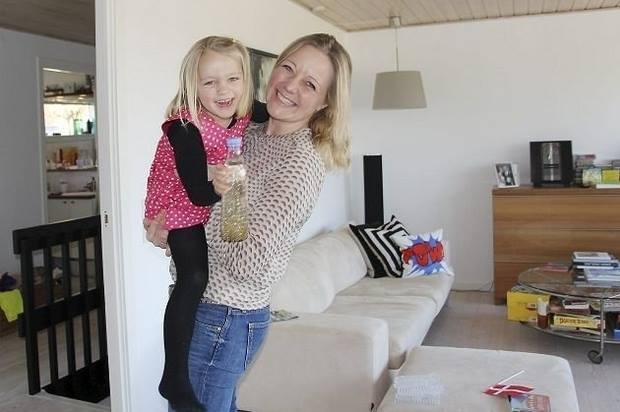
‘Thank you for the wonderful inspiration. I can hardly describe the almost euphoric feeling I got when reading BrainSmart Kids. I’m a mother of three boys aged 6, 8 and 10, and BrainSmart Kids was exactly what I was looking for to support my way of bringing them up.
I’m also a qualified pre-school teacher, and both as a mother and a teacher, I can’t think of a more relevant book for any family with children. I recommend it to anyone who will listen to me. It ought to be on the curriculum for pre-school teacher training programmes.’
Pre-schoool teacher Emily Somers
‘As a parent twice over, I’ve had some exceptional AHA! moments with BrainSmart Kids. Despite its substantial scientific basis, the book presents the tools in a hands-on format that is easy to put into practice. This is the book’s strength: its methods really work! I would recommend all parents-to-be are given a copy of BrainSmart Kids during antenatal classes.’
Magnus Vagtborg, MD, father of two
‘A must-read for anyone working with children of all ages. In ‘BrainSmart Kids’, we get an explanation for many of the mental reactions we all have.
Anette Prehn offers many examples and makes the topics both entertaining and instructive. I often refer to the book in meetings with parents and children. I find that many people thereby are reassured to know that there’s ‘nothing wrong’ with them or their children, and that there are both good explanations and solutions.
As a school head, I’ve gained more confidence in the choices I’ve made in optimising the psychosocial environment for both the children and staff. I find that this book has empowered me professionally and personally, too. I warmly recommend ‘BrainSmart Kids’ to school heads, teaching staff and parents alike.’
Henrik Fridorf, school head, Norway
‘I first read ‘BrainSmart Kids’ when my oldest daughter was two years old. She is eight now, and I guess that I’ve read it eight times. If I were to recommend just one book about children, it would undoubtedly be ‘BrainSmart Kids’.
My two daughters have known what the amygdala in the brain is since they were very young, and they often ask if we can read the Brain Friends series together. They have loved it for many years. I have all the books that Anette Prehn has written. Over the years, I have read an enormous amount of non-fiction, but never before or since have I come across anything as useful as these books.’
Tine Lund Jespersen, mother of 2, riding instructor
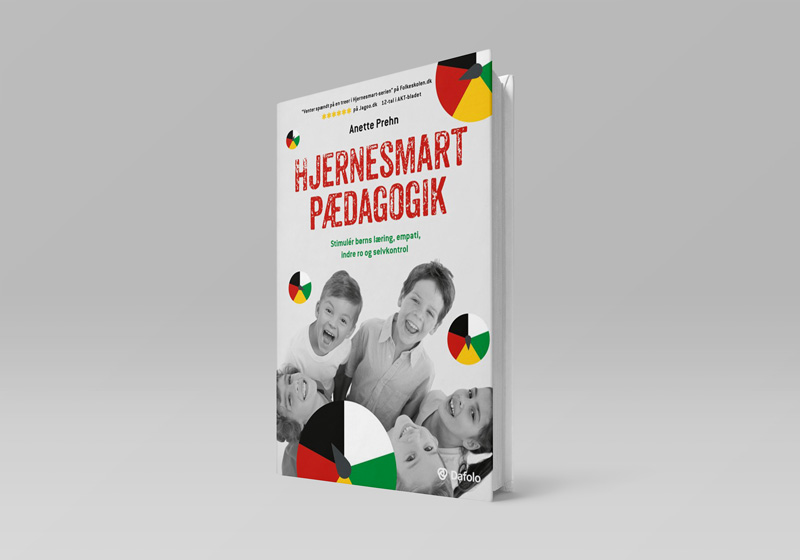
‘Anette Prehn’s work in translating the brain’s rules of play into practical pedagogy is ready to use straight away. It should be on every bedside table!’
Kirsten Pedersen, Head of Primary Education, Vejgaard Østre School
‘Anette Prehn truly contributes to strengthening pedagogues’ interactions with children!’
Michael Andersen, Pedagogical Leader, Gentofte Municipality
‘Complex material made accessible to everyone. Full of practice-oriented tools. Read it!’
Inger Marie Kristensen, School Leader, Sct. Jacobi School
‘I can recommend this book to everyone who has children or works with children! In this book, you gain knowledge and practical tools to strengthen children’s learning, awareness of their own abilities, inner peace, etc., all told in a knowledgeable and lively manner. The book is structured as a journey, and the reader really goes on an exciting journey! You visit yourself ‘on the top floor’ and become wiser about the rules of the game you’re actually playing by. It makes you smile, reflect, and eager to try new tools. You visit pedagogy, the science of our thinking, and neuroscience. The journey is permeated by the author’s desire to lovingly shift our preconceptions of ourselves and each other with the goal of giving the next generation the best conditions for learning and development.’
Line Rønn Shakoor, Teacher, MA in Pedagogy
BRAINSMART PEDAGOGY
‘BrainSmart Pedagogy’ translates neuroscience into practical pedagogy in an easily understandable manner and explores how brain research can enrich the pedagogical experience and the existing pedagogical methods.
The book offers an introduction to the rules of the brain for everyone interacting with kids and teens in everyday life. At the same time, it also presents a wide range of concrete tools, songs, and games to stimulate children’s learning, empathy, inner calm, and self-control, which will strengthen their brains.
‘BrainSmart Pedagogy’ is structured as a journey to five ‘destinations’ in the brain – Amygdala, Hippocampus, Prefrontal Cortex, Self-directed Neuroplasticity and Working Memory – with plenty of examples and tools, inspiring the reader’s interaction with and deeper understanding of kids.
The book is aimed at professionals who work and interact with kids and teens aged 3 to 16 years. However, parents gain a lot from the book too.
‘Neuroscience in everyday language. A huge eye-opener!’
Maria Grüner Vangmand, Pedagogue, Kokkedal Childcare Center
”BrainSmart Pedagogy is my bible. I’ve been a pedagogue for 25 years, and I’ve seen a lot of ‘new wine in old bottles’ over time. But this is NEW! Finally, something that truly has the power to change people’s approach to pedagogy. Anette Prehn delivers brilliant science communication – quite simply. Useful and easy to understand. Even my husband, who works in a slaughterhouse, has become ‘familiar’ with the amygdala, and the brain’s rules of play have become a part of our life together. Brilliant!”
Helle Jensen, Pedagogue, Struer
“I LOVE IT, as Ole Henriksen would say. It’s groundbreaking communication, and I hope this book will sell in droves. When children, young people, and adults become quiet and listen because it makes sense, then an author has come a long way. Great!! I use BrainSmart pedagogy in my practice as a pedagogue and in my life. THANK YOU!”
Tonny Skinbjerg, Pedagogue, Alleroed
‘A very, very useful book. I wish I had read this book back in my training in the 1990s – it would have better prepared me to face practice.’
Anne Oerskov, Teacher, Oestervang School
‘BrainSmart Pedagogy’ received a top grade in the review from AKT-Bladet.
Folkeskolen (the journal for all teachers in Denmark) wrote: ‘Eagerly waiting for a third in the BrainSmart series.’
And Paedagogen gave the book six out of six stars, writing among other things that it is ‘a true cornucopia of knowledge and activity suggestions.’
BRAIN FRIENDS:
Make FRIENDS WITH YOUR BRAIN
In order to give children and teenagers a fair chance to transform their brains into allies rather than adversaries, Anette Prehn has authored seven minibooks in Danish. The first two have been translated into English: “The Pathways in the Brain” and “Become Friends with the Brain’s Amygdala”.
These books have become incredibly popular because they provide young people with insight into—and a vocabulary for—understanding what happens in their brains during performance situations, habit changes, or interactions with others and themselves.
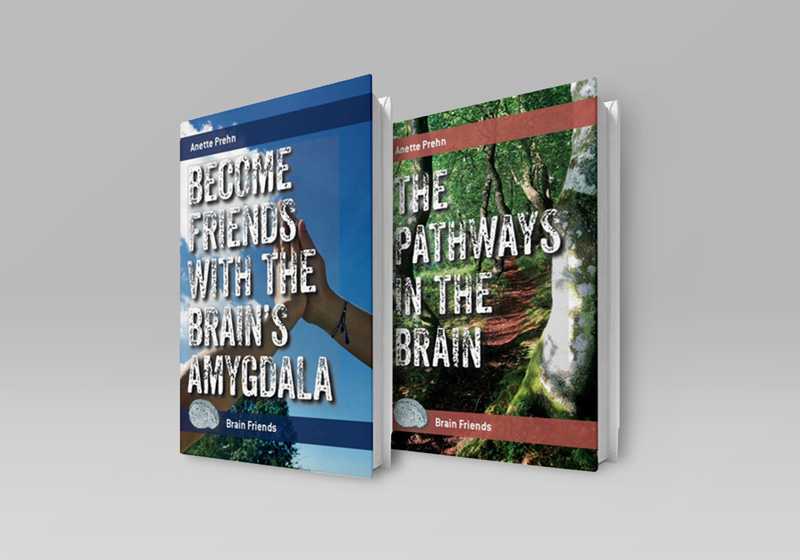
‘Full of knowledge, Anette Prehn leads us on the pathways of the brain to a deeper understanding of how the brain assists us in everyday life. This book gives children, teenagers and everyone else insight into many important aspects of our wonderful brain. The book focuses on the brain both in terms of development throughout generations and regarding an individual’s ability to change the wiring of the brain, so that we can be courageous, happy and tackle issues with ease. I recommend it greatly.’
Troels W. Kjær, professor, neuroscientist, medical director
‘My 9-year-old son, Jakob, has read ‘The Pathways of the Brain’ himself and thought it was excellent. He understood that one needs to keep practising until a given skill is learned, and then everything becomes easier. Moreover, he saw himself in the boy in the book so much that he suggested that the boy should have been called Jakob. This book will move mountains!’
Ulrik Blirup, father
‘The mini books are also very useful for children/young people with autism. When they gain knowledge about the brain and the automatic reactions, they feel relieved. They listen and become curious about the brain as a whole. For some, it can even become a special interest for a period. It takes away some of their guilt, as they are often told they have bad behavior. The books have fine illustrations, which make it easy for us to talk from, and not least good tools for a common language, which goes hand in hand with autism/ADHD-friendly pedagogy.’
Anne-Mette Hahn, Dronninggaard School, Head of after-school program/special education department & coordinator of the resource team
‘In ‘Become Friends with the Brain’s Amygdala’, Anette Prehn translates complicated physiological knowledge into highly useful mental exercises for children – at eye level. These are easy to apply, not the least because the book gives children a language to help them bridge the gap between their emotions in challenging social situations and a healthy, constructive handling of them. Through the book, children learn to understand, accept and regulate emotions and develop a sound inner compass. By understanding that anxiety, fear and stress is caused by activity in the amygdala, the child gains the ability to reflect and act more freely. This book is a great tool for strengthening children’s resilience!’
Per Schultz Joergensen, professor of social psychology, author of ‘Robust Kids’
‘A good and instructive book. I like to imagine that I have a forest in my head. And that the more I walk on a path, the more it becomes a habit. If I don’t use a path, it becomes overgrown with moss, branches, and grass, and I then have to walk on it many times again in order to restore it. I also like to imagine that I have a ‘backpack’ with the many good situations I have managed even though I didn’t feel that comfortable with it at first (such as rollercoaster rides or double backflips in gymnastics).’
Sofie Ulrich-Hansen, 12 years old
‘These mini books can be read by EVERYONE and provides a fantastic starting point for a constructive conversation and understanding between foster parents and foster children. Therefore, we’ve purchased 300 set of the seven minibooks to give to our dedicated full-time foster families.‘
The Visitation and Foster Care services in Aalborg Municipality, Denmark
WHAT IS BRAINSMART PARENTING?
The BrainSmart Parenting approach shows you how to:
- turn “stop that!” situations into learning opportunities,
- help your child bounce back from distress and anger,
- strengthen your child’s calm courage when grabbed by fear or performance anxiety,
- reframe situations to help you be a constructive parent even in the midst of high emotional tension,
- make the most of the brain’s plasticity; i.e. ability to grow and shape neural pathways,
- approach life as a parent in a new light, spotting windows of opportunity based on how the brain actually works.
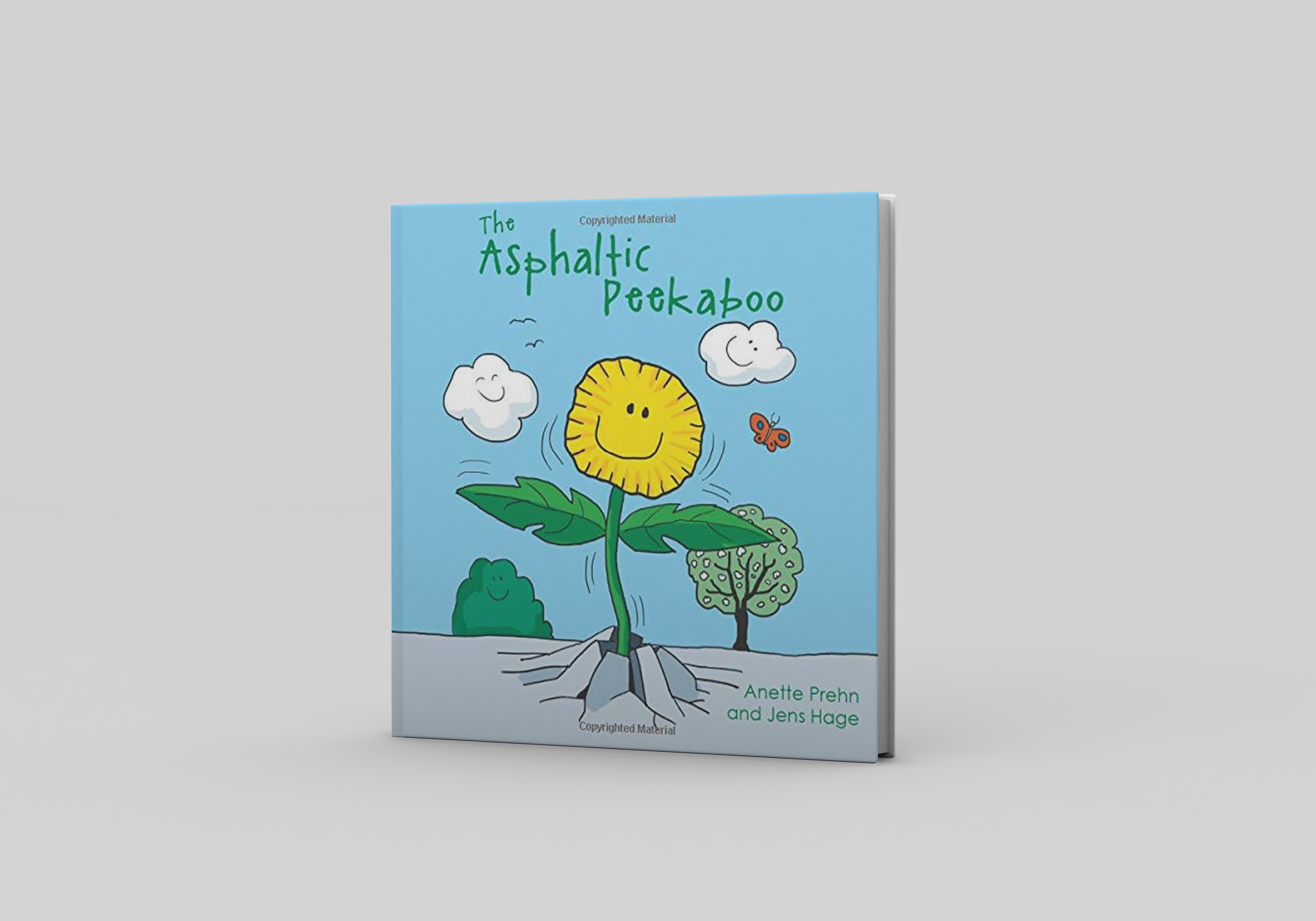
The asphaltic peekaboo
‘The Asphaltic Peekaboo’ is Anette Prehn’s first picture book in English. Its core message for the child is: ‘What I see is very much down to me’.
The book is a unique tool whereby parents can help their children cope with an increasingly complex world.
It is a great conversation starter that adds depth and reflection to the engagement opportunities of everyday family life.
Combined with its manageable length, this book is a favourite bedtime story for children aged 4+ and for younger school kids too. It is popular for children to read up until the age of 10/11.
”This timeless insight is a precious gift for children and adults alike. It reminds us that we can shape our emotional lives by paying attention to how we think about ourselves, others, and the world around us.”
Dr. James Gross, Professor of Psychology, Stanford University, US
“Reframing is one of the most powerful tools to prevent us from getting dragged down and stuck by the stresses and hassles of everyday life. This little gem is a delightful, clever, and fun way to introduce children (and their parents!) to the art of reframing and helps start life-long, healthy brain habits. One can only hope for a whole collection of these reframing poems.”
Dr. Karen Shue, Clinical Neuropsychologist and Neurocoach, Canada
“Wow! This is indeed a great little book that will make a huge difference in children’s lives. It is infectious in its energy, powerful in its message and delightful in its visuals. Reframing is a very effective method that offers children unique ways of seeing a situation/event/person in a new, empowering light. At my school, we did a successful pilot with Danish 10-year-olds who first had The Asphaltic Peekaboo read aloud to them in English (their second language), while looking at the illustrations via the Smart Board. This created immediate enthusiasm! After this, the children read the story aloud for each other, working in pairs. Then we started playing with reframing, taking different “glasses” on while talking about different situations. The children “got it” and reframing easily became part of their common language and interaction. At the school, we are now implementing the reframing method more broadly to increase motivation and inclusion. Thanks for the inspiration!”
Inger Marie Kristensen, School Head, Faster Primary School, Denmark
“It was Picasso who said it took him sixty years to see through the eyes of a child. Our childhood, so rich in a natural sense of ambiguity, is rapidly replaced by an assumption-filled adulthood intent upon getting to the single, right answer. The Asphaltic Peekaboo reminds us and our children of the importance of being open-minded about how we look at things, and that for every weed, there is indeed a miracle of nature.”
Paul Walton, Innovator, Brand Strategist and Director Cello PLC, UK
“Does a dandelion that breaks through asphalt equal a weed or a strong symbol of the beauty and power of life? The Asphaltic Peekaboo is a great rhyming book that inspires children to see the half full glass instead of the half-empty glass. Reframing – the ability to choose constructive interpretations – is a tool that should be in every kid’s tool box from an early age. It helps them cope with the millions of different people and situations they come across in life. The Asphaltic Peekaboo offers a fun and engaging way to start reframing. Highly recommended for families with young children!”
Cecilie Wallengren, mother of two, Denmark
”This delightfully simple book is a wonderful way to help children learn about the different ways of seeing the world. It will be a great conversation starter in families and schools.”
David Drake, PhD, Executive Director, Center for Narrative Coaching, Australia
STRENGTHEN BRAIN CONNECTIONS
In many situations where kids feel stupid, small and humiliated we could have helped them strengthen relevant connections in the brain if we’d applied knowledge about the brain. Thus, we could have helped them get a valuable life experience rather than experiencing (yet another) status threat.
A CHILD’S ANXIETY STARTS WITH THE ADULTS
Research from several countries indicate that children today seem to have less resilience than former generations. There are aspects of kids’ anxiety that many are unaware of. Anette Prehn points our attention to the often BrainClumsy communication and behaviour of adults.
HELP YOUR CHILD WHEN REFUSING TO SAY ‘I’M SORRY’
Every parent probably knows this situation. Your child has done something inappropriate like hitting or hurting someone else, excluding someone or saying something that makes others feel bad or sad. You would like your child to say “I’m sorry!” but s/he isn’t going to. The situation is getting more and more intense. What can you do?
Read more about how you can help your child in situations like these.
YOU CAN’T REMOVE YOUR CHILD’S FEAR!
Behaviour, feelings and habits are like pathways in your brain. The pathways you’ve taken numerous times have become broader and are thereby now the obvious choice to follow. The pathways which are only used rarely have become overgrown … just like pathways in a forest or on a lawn.
